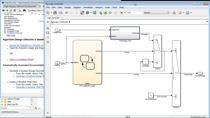Qualified Test Generation | Using Qualified Tools in a DO-178C Development Process, Part 9
From the series: Using Qualified Tools in a DO-178C Development Process
Test coverage of high-level requirements and low-level requirements are objectives in DO-178C. Test coverage of the high-level software requirements is achieved by re-running the simulation cases used to verify the model on the target code. Simulink Test™ provides the capability to then re-run the simulation cases that were run on the model and reuse them to test the executable object code against the high-level requirements. For low-level software requirements coverage, it is necessary to show that all the requirements in the model are covered by testing. Using model coverage, a feature of Simulink Coverage™, it can be shown that many of the low-level requirements in the model are covered by the high-level test cases. Simulink Design Verifier™ is then used to automatically generate tests from the model for only those missing low-level requirements coverage. This is accomplished by inputting the model coverage data into Simulink Deign Verifier and having it ignore the existing coverage for the model. Simulink Coverage provides validation that the missing model coverage is achieved. This validation is necessary because Simulink Design Verifier may perform numeric approximations or use block replacements when generating the tests, so the model coverage is run on the original model, rather than the approximated one. Two reports are provided by the tools: A test generation report from Simulink Design Verifier and a model coverage report from Simulink Coverage. The DO Qualification Kit provides the necessary artifacts to qualify the generation of the model coverage report from Simulink Coverage.
Published: 24 Sep 2024






